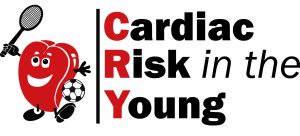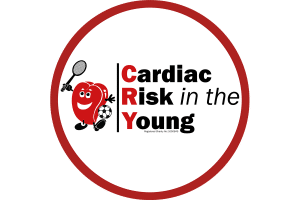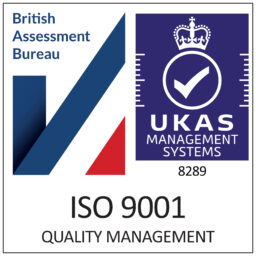Firstly Dr Jayaratne, before we chat about the large research project you’re working on with Dr Gati in “Phase 2” of your CRY Research Fellowship & PhD, could you please talk us though the abstract* which was presented at the most recent European Association of Preventive Cardiology (EAPC) event in Athens (Spring 2024) – and which received well-deserved recognition and interest:
[*Are patients with hypertrophic cardiomyopathy given appropriate advice on exercise at a central London inherited cardiac conditions outpatient service]
“So, the background to this research is born from the fact that previously, all international guidelines relating to exercise advice for people diagnosed with hypertrophic cardiomyopathy were based on “limiting physical activity” due to the perceived increased risk of sudden cardiac death caused by exercise and high intensity activity – which understandably led to a lot of fear in affected individuals. This approach to exercise advice was originally based on a registry of deaths from Hypertrophic cardiomyopathy (HCM) – recorded in the United States – which caused many clinicians to act with great caution about how patients should be advised to exercise safely (if at all).
“However, new and refined advice published by the European Society of Cardiology (ESC) in 2020 was a real ‘game-changer’ for those patients diagnosed with HCM and who wanted to enjoy an active lifestyle.
“But, despite this new guidance, were clinicians regularly and consistently presenting these individuals with the most up-to-date advice? This led us to question how well our own team at The Royal Brompton’s centre for Inherited Cardiac Conditions were actually informing our patient population.
“Our project had an impressive cohort of 730 patients (all diagnosed with HCM and under the care of the ICC team) and we specifically looked at whether they were routinely being given personalised ‘exercise advice’ – as they should be – and if so, if that advice aligned with the current guidance.
“It was promising to report that we found that just over half (51%) of the cohort were receiving individualised, written exercise advice (either at their initial or follow-up appointment at the ICC clinic). We also found there had been a 16% increase in the number of patients receiving exercise advice following the publication of the 2020 guidelines, which was a real step in the right direction. Of course the aim is to have100% of our patients receiving appropriate exercise advice so we will be presenting this data in our local governance meetings in order to inform the team of the results and improve our compliance with the latest ESC 2020 guidance on exercise advice in HCM patients”

What can ICCs across the UK learn from this project? How can they “do better” when providing individual ‘exercise prescription’ and reassuring HCM patients about the benefits of staying active?
“What this project really set out to do was gain a better understanding of just how compliant the ICC team at The Royal Brompton is in terms of adhering to the ESC’s most recent sports cardiology advice and guidelines
“We found that we are doing well – but ideally, we want every patient coming into our clinic to be given appropriate and up-to-date advice on how they can exercise regularly and safely (put simply, explaining what they can and can’t do).
“However, the first step to improvement is to fully understand how we’re doing, right now – so the fact that this project has shown we’re compliant in following the ‘exercise guidelines’ around 50% of the time is certainly encouraging for our clinicians at The Royal Brompton (who are seeing patients on a daily basis) and suggests that ‘we’re doing the right thing’…although there’s still much room for improvement!
“And, moreover, having presented these findings at such a high profile, well attended and prestigious platform as the recent EAPC conference, we hope our abstract will have inspired fellow clinicians to take key learnings about “what’s happening at the Brompton” back to their own hospitals and ICC services and to create a snowball effect of good practice.”
Can you tell us about the current research project you’re working on [alongside former CRY Research Fellow, Dr Sabiha Gati], funded through the Brentford FC through the Heart of West London initiative?
“So, my main PhD project (funded by CRY, Royal Brompton and Harefield Hospitals Charity and the Heart of West London initiative) will focus on an in-depth study of a large cohort [240 participants, comprising both athletes and non-athletes] of screened individuals as we seek to gain a better understanding of when young people should be offered a cardiac MRI or exercise stress test to confirm an underlying risk of abnormal rhythms.
“This study really is ‘a first’ in the UK – and Europe – as, whilst some similar, early research has been carried out into answering this particular research question, we are confident our project will serve as a really complete and comprehensive piece of research which we hope will yield some clear results and ultimately, screening guidance.
Dr Gati and I have certainly got an intense and busy time ahead and I’m excited to see what we learn and the potential impact of our findings over the next year or so. Watch this space!”

So, at this midpoint of your CRY Research Fellowship with CRY, are you able to sum up what you’ve learnt so far (in terms of both research achievements and your experience of attending CRY screening events)?
“I was relatively new to the world of research when I took up my fellowship with CRY, so it was certainly a steep learning curve when I first started – particularly relating to everything involved in getting a project ‘up and running’ (e.g. ethical and local approval, taking a concept through to recruiting participants).
“But right from the outset, I just felt so fortunate to have funding from CRY along with the support of my supervisors, to facilitate this research project which I hope will help to answer important questions about sudden cardiac death in young people.
“My involvement with CRY screening over the past 18 months has absolutely opened my eyes to just how important this programme is. Although I was aware of CRY’s screening programme, it was only when I started attending sessions around the UK that I fully appreciated its impact – as I met and spoke to the young people [and their parents] who were coming through the door to be tested, many of whom will have sadly known of someone in their community or even a classmate who had tragically died from a sudden cardiac arrest.
“I’ve certainly identified both heart rhythm and structural abnormalities in asymptomatic young people and teenagers at the screening sessions which I’ve attended, leading to referrals for important, ongoing investigations (including screenings held at Brentford FC, funded by the Robert Rowan Memorial Fund).
“It’s always difficult to have that follow up chat with a young person – who has generally just ‘turned up’ without any worries or obvious health issues – and explain to them what we’ve seen and what happens next. It has to be a very cautious and careful conversation – although assertive enough to ensure that they do follow up on what we’ve seen on their ECG.
“I also explain that it’s a ‘good thing’ they came along and that early identification of any potential problem is vital – something can always be done and there are a variety of treatment options available for the various abnormalities we pick up. In essence, knowing about an underlying condition will always be better than not knowing about it and potentially putting yourself at risk. Our aim is that whatever the results on the day of a CRY screening, everyone leaves feeling reassured, in one way or another, and if necessary, they will be receiving the correct investigations and referrals.”
So, looking back…why did you first decide to apply for a CRY Research Fellowship?
“As a Medical student, I’d always been aware of Cardiac Risk in the Young and had seen several colleagues taking up CRY Research Fellowships (and always saying such positive things about the opportunity!).
“So, it felt like an obvious route to me, to help realise my research ambitions. It’s so difficult to obtain research funding and in my opinion, CRY is one of the pioneering organisations which provides direct funding to allow doctors to achieve their research ambitions. I also found out about Dr Gati’s ‘journey’ as a CRY Research Fellow and having learnt more about her research projects and subsequent career path, it really inspired me to apply.
“In summary, what I’ve really learnt since becoming involved with CRY is that “CRY families” are the most important part of the charity – not only do they sponsor and support the screening sessions that we, as doctors, attend but they also contribute hugely to the amount of research we’re able to carry out. I can only reiterate how grateful we all are for their tireless fundraising efforts which allows us to continue screening thousands of young people every year alongside our research projects which are so vital in adding to the international knowledge base around sports cardiology and young sudden cardiac death.
“But there’s still much work to be done.”
Nirmitha graduated from St Bartholomew’s and The London school of medicine in 2015 with distinction and completed an intercalated BSc in Cardiovascular sciences with 1st Class honours at Imperial College London in 2013. She has won several academic prizes as well as prizes at international conferences for the research carried out during her BSc. She achieved Membership of the Royal College of Physicians in 2018 and obtained a national training number in Cardiology in 2020. During her Cardiology specialist training Nirmitha was appointed as a CRY Clinical Research fellow in October 2022 and is currently undertaking a higher Research degree under the supervision of Dr Sabiha Gati and Professor Sanjay Sharma.





